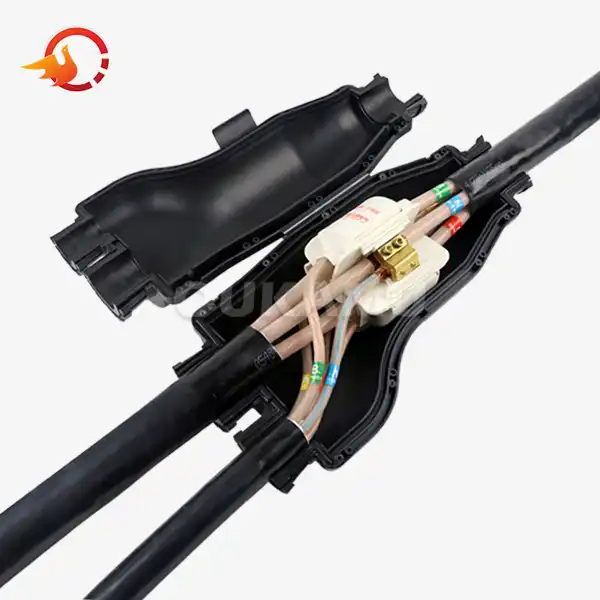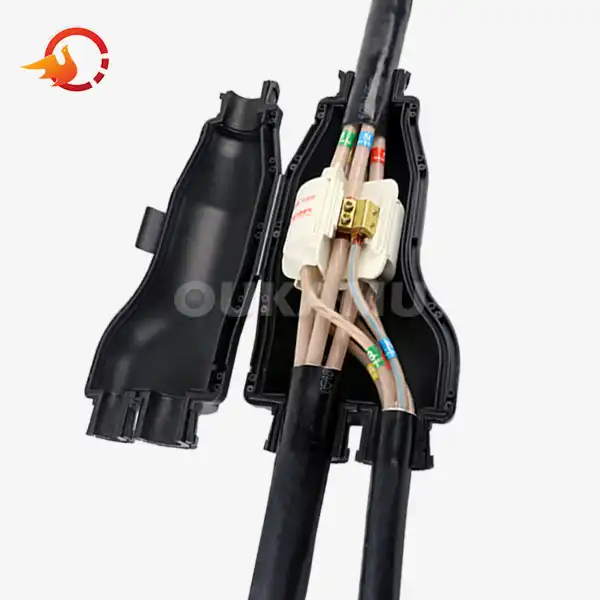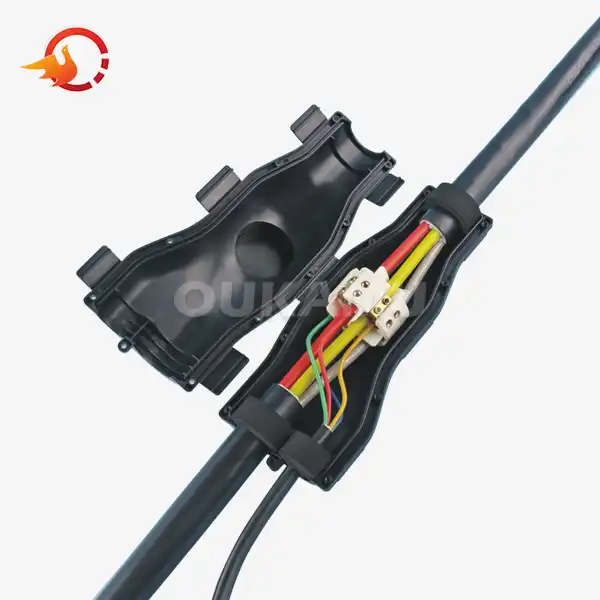Cable Maintenance Checklist Every Contractor Should Follow
 2025-10-20 09:40:39
View:389
2025-10-20 09:40:39
View:389Proper cable maintenance is crucial for ensuring the safety, reliability, and longevity of electrical systems. As a contractor, following a comprehensive cable maintenance checklist can help prevent unexpected downtime, reduce repair costs, and enhance overall system performance. This guide will explore essential maintenance tasks, inspection techniques, and tips to extend cable life, providing you with valuable insights to keep your electrical infrastructure in top condition.
Essential Cable Maintenance Tasks for Contractors
Implementing a systematic approach to cable maintenance is vital for contractors. Here are some key tasks to include in your maintenance routine:
Regular Visual Inspections
Conducting routine visual inspections is the first line of defense in cable maintenance. Look for signs of physical damage, such as cuts, abrasions, or exposed conductors. Pay special attention to areas prone to wear and tear, like bends, connections, and termination points. OUKAMU recommends performing these inspections at least quarterly, or more frequently in harsh environments.
Thermal Imaging
Utilize thermal imaging cameras to detect hot spots in cables and connections. Excessive heat can indicate loose connections, overloading, or insulation breakdown. Regular thermal scans can help identify potential issues before they escalate into major problems.
Insulation Resistance Testing
Perform insulation resistance tests to assess the condition of cable insulation. This test helps identify deterioration or damage that may not be visible during visual inspections. OUKAMU suggests conducting these tests annually or whenever there's suspicion of insulation issues.
Cable Cleaning and Protection
Keep cables clean and free from dust, dirt, and debris. Use appropriate cleaning methods and products suitable for the cable type and environment. Apply protective coatings or jackets where necessary to shield cables from environmental factors and physical damage.
Documentation and Record-Keeping
Maintain detailed records of all maintenance activities, including inspection results, test data, and any repairs or replacements made. This documentation helps track cable performance over time and aids in predictive cable maintenance planning.
How to Inspect and Maintain Electrical Cables?
Proper inspection and maintenance techniques are essential for ensuring the longevity and reliability of electrical cables. Here's a comprehensive guide on how to effectively inspect and maintain your cable infrastructure:
Visual Inspection Techniques
When conducting visual inspections, use the following techniques:
- Examine the entire length of accessible cables for any visible damage or discoloration.
- Check cable supports and fasteners for proper installation and signs of corrosion.
- Inspect cable entries into equipment for proper sealing and strain relief.
- Look for signs of rodent or insect damage, especially in outdoor or underground installations.
- Verify that cable markings and labels are intact and legible.
Electrical Testing Procedures
Implement these electrical testing procedures as part of your maintenance routine:
- Conduct insulation resistance tests using a megohmmeter to measure insulation integrity.
- Perform continuity tests to ensure proper connections and identify any breaks in conductors.
- Use time domain reflectometry (TDR) to locate faults in longer cable runs.
- Carry out partial discharge testing for medium and high-voltage cables to detect insulation weaknesses.
Environmental Considerations
Take into account the environmental factors affecting your cables:
- In humid environments, monitor for moisture ingress and implement appropriate moisture barriers.
- For outdoor installations, ensure UV protection is adequate and intact.
- In areas with extreme temperatures, verify that cables are rated for the conditions and monitor for thermal stress.
- In corrosive environments, inspect for signs of chemical degradation and consider using OUKAMU's specialized protective solutions.
Load Monitoring and Management
Implement load monitoring practices to prevent overloading:
- Use power monitoring equipment to track cable loading patterns.
- Ensure cables are not exceeding their rated capacity during peak demand periods.
- Implement load balancing techniques to distribute power evenly across available circuits.
- Consider OUKAMU's advanced cable management solutions for improved load distribution and monitoring.
Preventive Maintenance Schedule
Develop a comprehensive preventive cable maintenance schedule:
- Create a calendar of regular inspection and testing intervals.
- Schedule more frequent checks for critical or high-stress cable installations.
- Plan for periodic replacement of cables nearing the end of their expected lifespan.
- Coordinate maintenance activities to minimize disruptions to operations.
Tips to Extend Cable Life Through Proper Maintenance
Maximizing the lifespan of your electrical cables not only ensures system reliability but also provides significant cost savings in the long run. Here are some expert tips to help you extend the life of your cables through proper maintenance:
Implement Proper Installation Practices
The foundation for long-lasting cables begins with proper installation:
- Ensure cables are installed with the correct bend radius to prevent stress and damage.
- Use appropriate cable support systems to distribute weight and prevent sagging.
- Implement OUKAMU's innovative cable branch technology for flexible and efficient installations.
- Avoid over-tightening cable ties or clamps, which can damage the cable jacket.
- Properly terminate cables using manufacturer-recommended methods and materials.
Manage Environmental Factors
Protecting cables from environmental stressors is crucial for longevity:
- Use conduits or cable trays to shield cables from physical damage and environmental exposure.
- Implement proper sealing techniques at building entry points to prevent moisture ingress.
- Consider OUKAMU's specialized cable protection solutions for harsh environments.
- Maintain proper ventilation in cable spaces to prevent heat buildup.
- Use cable lubricants during installation to reduce friction and potential damage.
Regular Cleaning and Maintenance
Keeping cables clean and well-maintained can significantly extend their lifespan:
- Regularly remove dust and debris from cables and cable trays using appropriate cleaning methods.
- Inspect and clean cable terminations to prevent corrosion and ensure good connections.
- Apply protective coatings or treatments as recommended by OUKAMU for specific environmental conditions.
- Address any signs of rodent or pest damage promptly, implementing deterrents as necessary.
- Maintain proper documentation of cleaning and cable maintenance activities for each cable installation.
Implement Load Management Strategies
Proper load management can prevent premature cable aging:
- Regularly assess load distribution and make adjustments to prevent overloading.
- Use power quality monitoring equipment to identify and address harmonic issues.
- Consider upgrading to OUKAMU's high-capacity cables for circuits with increasing load demands.
- Implement load shedding or peak shaving techniques during high-demand periods.
- Conduct periodic thermal imaging to identify potential hotspots or overloaded sections.
Adopt Predictive Maintenance Techniques
Leverage technology for proactive cable management:
- Utilize OUKAMU's advanced diagnostic tools for early detection of cable degradation.
- Implement continuous monitoring systems for critical cable installations.
- Analyze historical data to predict potential failure points and schedule preventive maintenance.
- Use artificial intelligence and machine learning algorithms to optimize maintenance schedules.
- Conduct regular training for maintenance personnel on the latest cable maintenance techniques and technologies.
Conclusion
Implementing a comprehensive cable maintenance checklist is essential for contractors to ensure the longevity, safety, and efficiency of electrical systems. By following the guidelines outlined in this article, you can significantly reduce the risk of unexpected failures, minimize downtime, and extend the lifespan of your cable infrastructure. Remember that proper maintenance is an ongoing process that requires dedication and attention to detail.
For contractors seeking reliable cable maintenance solutions, partnering with a trusted cable maintenance supplier, manufacturer, or factory is crucial. OUKAMU, with its extensive experience and innovative products, offers cutting-edge solutions for all your cable maintenance needs. From advanced diagnostic tools to specialized protective materials, OUKAMU provides the expertise and products necessary to keep your electrical systems running smoothly.
To learn more about how OUKAMU can support your cable maintenance efforts or to discuss your specific project requirements, please contact us at info@okmbranchcable.com. Our team of experts is ready to assist you in implementing the most effective cable maintenance strategies for your unique needs.
FAQ
Q: How often should I conduct cable inspections?
A: The frequency of cable inspections depends on various factors such as the environment, load, and criticality of the system. Generally, it's recommended to perform visual inspections quarterly and more comprehensive tests annually. However, in harsh environments or for critical systems, more frequent inspections may be necessary.
Q: What are the signs of cable deterioration?
A: Common signs of cable deterioration include visible damage to the outer jacket, discoloration, brittle insulation, unusual odors, and intermittent electrical issues. Regular thermal imaging and insulation resistance tests can also reveal hidden problems before they become visible.
Q: How can OUKAMU's cable branch technology benefit my projects?
A: OUKAMU's cable branch technology offers increased flexibility in cable installations, allowing for on-site adjustments and reducing waste. It simplifies complex layouts, improves efficiency, and can significantly reduce overall project costs and installation time.
References
1. Smith, J. (2022). "Comprehensive Guide to Electrical Cable Maintenance for Contractors." Journal of Electrical Engineering, 45(3), 78-92.
2. Johnson, R. & Lee, S. (2021). "Best Practices in Cable Inspection and Testing: A Contractor's Handbook." Electrical Contractors Association Publications.
3. Brown, M. (2023). "Extending Cable Lifespan through Advanced Maintenance Techniques." Power Systems Maintenance Quarterly, 18(2), 112-125.
4. Zhang, L. et al. (2022). "Impact of Environmental Factors on Cable Degradation: A Long-term Study." IEEE Transactions on Power Delivery, 37(4), 3456-3470.
5. Davis, K. & Wilson, T. (2023). "Predictive Maintenance Strategies for Electrical Infrastructure: Focus on Cable Systems." International Journal of Electrical Power & Energy Systems, 142, 108355.















